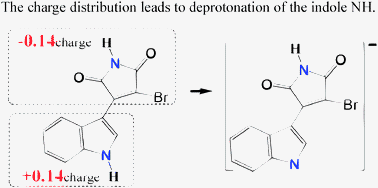Theoretical study of photo-physical properties of indolylmaleimide derivatives†
Abstract
Photo-physical properties of

* Corresponding authors
a
Department of Chemical Physics, University of Science and Technology of China, Hefei, P. R. China
E-mail:
yizhao@xmu.edu.cn
b State Key Laboratory for Physical Chemistry of Solid Surfaces, and Department of Chemistry, College of Chemistry and Chemical Engineering, Xiamen University, Xiamen, P. R. China
c Graduate School of Pharmaceutical Sciences, Kyushu University 3-1-1 Maidashi, Higashi-ku, Fukuoka 812-8582, Japan
d
Faculty of Science and Technology, Sophia University, 7-1 Kioi-Cho, Chiyoda-ku, Tokyo 102-8554, Japan
E-mail:
shinkoh.nanbu@sophia.ac.jp
Photo-physical properties of

 Please wait while we load your content...
Something went wrong. Try again?
Please wait while we load your content...
Something went wrong. Try again?
Z. Zheng, Y. Zhao, M. Nakazono and S. Nanbu, Phys. Chem. Chem. Phys., 2012, 14, 3017 DOI: 10.1039/C2CP22946C
To request permission to reproduce material from this article, please go to the Copyright Clearance Center request page.
If you are an author contributing to an RSC publication, you do not need to request permission provided correct acknowledgement is given.
If you are the author of this article, you do not need to request permission to reproduce figures and diagrams provided correct acknowledgement is given. If you want to reproduce the whole article in a third-party publication (excluding your thesis/dissertation for which permission is not required) please go to the Copyright Clearance Center request page.
Read more about how to correctly acknowledge RSC content.
 Fetching data from CrossRef.
Fetching data from CrossRef.
This may take some time to load.
Loading related content
